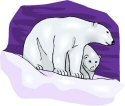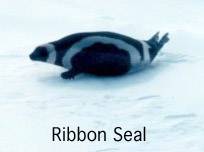1 Hundreds of seals live in the cold waters of the polar region. They have strong flippers and smooth bodies that make them good swimmers. Seals use their front flippers to find their way through the water. They use their back flippers to push themselves forward. Seals are also good divers. They can go deep in the water and stay under for 30 minutes.
2 Seals have to come to the surface to breathe. They need air to breathe because they are mammals. Sometimes seals make holes in the ice so they can breathe. They use their teeth to chip holes in the ice, or they use their flippers to push the ice away. Some seals even bump their heads into the ice to make holes.
3 All seals have 34 teeth. They eat fish and krill which are little tiny ocean animals that look like shrimp. Seals have thick, heavy coats of fur. The fur keeps them warm and dry. Seals also have lots of fat called blubber under their skin to help keep them warm. Seals do not always stay in the water. When they need to rest, they lay on top of the ice. Seals can swim really well, but they have a hard time walking on land. They slide their bodies across the ice or wriggle like worms. The ribbon seal lives in the Bering Sea and is very good at sliding on the ice. This seal has big black eyes and a dark body with light-colored lines that look like ribbons. A grown-up ribbon seal weighs 150 pounds and is about five feet long.
Paragraphs 4 to 7:
For the complete story with questions: click here for printable








